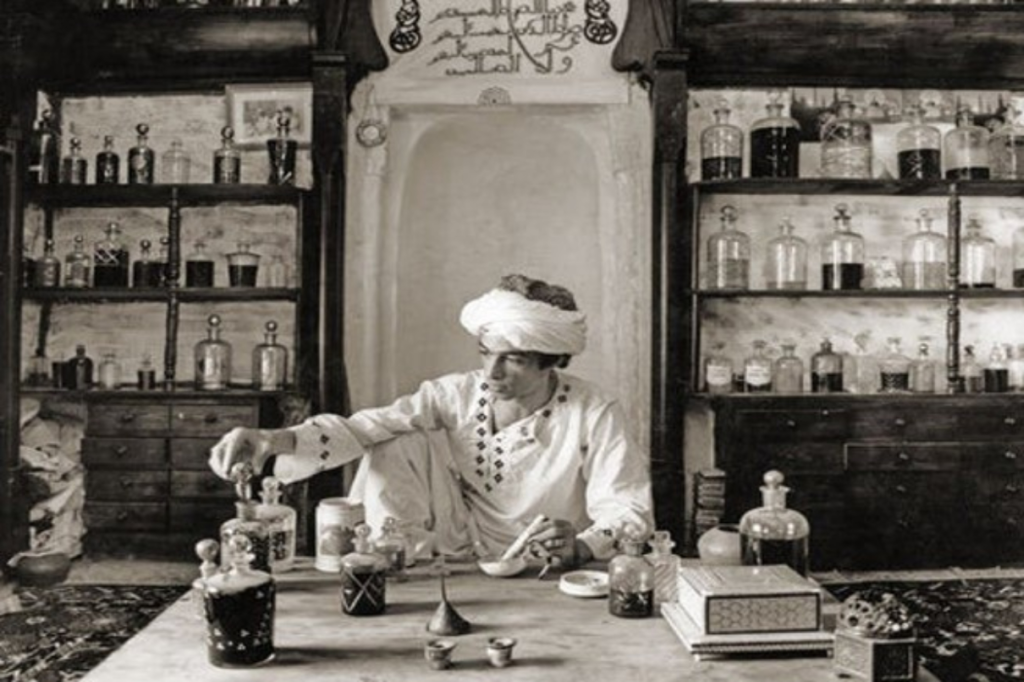A Fragrant Journey Through Time:
Fragrance known as perfume to many people is considered an accessory or even an extra item to something as clothing among other things boast of a long history. This olfactory odyssey is historical and geographical, encompassing historical epochs and even types of civilizations, as well as illuminating man’s innate inspiration, devotion, and pursuit of the sublime.
Ancient Beginnings: The Roots of Perfume:
Literally, history shows that perfume making is one of the ancient arts in human civilization. The information about the use of perfume dates to the first millennium BC and it is believed that it was invented in Mesopotamia around 2000 BC. The first people to make fragrant oils and ointments composed of different essential oils were the Sumerians and these were usually used for religious sanctions and in offerings to the gods. Some of the various natural materials they employed were flowers equations, spices, and resins to form the above scents.
In ancient Egypt, luxury perfumes had entered the daily lives of people. It was applied on dead bodies, offerings, cosmetics, crafts, and in religious rites. It also was thought that certain scents provided protection, and could alter the attitude of the gods. Floral oils included jasmine and lily, the remaining ingredients included myrrh and frankincense among others. The memorable Queen Cleopatra employed beautiful scents for her lovers and used it to add to beauty.
The Greeks and Romans also enjoyed the use of perfumes or perfumery. The smell was important to Ancient Greek philosopher Aristotle and the Romans used scents for their baths and other public areas. One of the significant aspects that provided for exotic interchanges in the Roman Empire was the flow of scented items from the east which made perfumes core components of Roman opulence.
The Middle Ages: A Period of Transformation:
The fall of the Roman Empire, there is a change in the history of fragrance. Some troubles came to the art of perfumery during the Middle Ages, as the Church considered fragrances as the temptations. But people’s desire for products with a fragrance did not disappear for a single moment, even if they were not as active as before.
In the Islamic world the methods were more advanced and so a more intricate way from obtaining the essential oil was developed. Avicenna was a Persian scholar who effectively placed his efforts into creating new perfumes from the rose or from any other flower they had available. New fragrances combinations were also introduced and alcohol was introduced as a base for the perfume to increase its longevity and strength.
It is remarkable that perfume came again to life in Europe by the Renaissance period. The royalty of Italy started using perfumes and so did the perfumers become recognized as artists. With the development of glass bottles, fragrance became easier to store and display, even more, therefore was part of the noble’s entitlement. This time was also the start of the concept called the ‘toilette’ which entailed bathing, washing with water and the use of scented oils making it synonymous to the current beauty practices.
The 17th and 18th Centuries: The Rise of the Perfume Industry:
The 17 thousand and the 18th centuries became the foundation for the perfume production. The art of perfumery was further developed in France and was popular mainly because of the King of France – King Louis XIV. The Sun King had spendthrift and perfumed ways and founded Grasse as the perfume capital of the globe. Perhaps, due to the favorable climate in Grasse, flowers viz., jasmine, lavender and rose became crucial for the growth of the perfume business.
It was at this time that perfumers started to turn to synthetic materials and thus began to discover alternative materials that also enabled them to create. It became possible to imitate the effects of natural substances thanks to the invention of new extraction techniques and chemical processes and this is how some of the most popular fragrances were created.
The second half of the 18th century also marked the early history of well-known houses: Jean-Marie Farina produced Eau de Cologne. From this new citrus scent the cologne developed and grew into the fashion of today for colognes.
The 19th Century: A New Era of Innovation:
The nineteenth century can be defined as the age of great discoveries of perfumes which was connected with the great enhancement of chemistry. Vanillin and coumarin are examples of synthetic compounds that transformed the fragrance business, the creation of fragrances. They helped perfumers obtain fragrances that were believed to be impossible earlier when using only natural components.
Another very important invention made at the time was the production of ‘Jicky’ the first modern perfume in 1889 by Aimé Guerlain. These are the oils that literally gave a new direction and prophecy to the future of perfumery due to the combination of natural and synthetic products. “Jicky” was followed by great legends as the Chanel No 5 of 1921 which heralded the elegant and sober spirit of modernity.
The Cultural Significance of Perfume
Scents have always been valued by various cultures of the world. Scent in many cultures is associated with spiritual practices or spirituality in general. For example, Hindu prayers offer the use of incense as well as the scented oils to clean air and sanctify the environment. Thus, among diverse indigenous populations throughout the world, the use of fragrances derived from plants and herbs is associated with healing rituals.
That is why, besides the religious sense, scents were connected with rank and position in society. In many western cultures people associate certain scents with being wealthy, classy, or even ethnically appropriate. Today people consider perfumes as mirrors: they reflect the owner’s personality and can say much about the mood of the owner.
The Science of Scent: How Perfumes Work:
The background of perfume helps reveal many valuable aspects of productive art. Perfumes are composed of aromatic compounds, which are categorized into three main notes: main where the melody is, essential middle pitch (the heart), and the bass section.
- First notes are the notes given off by a fragrance that are noted the moment the perfume is applied. They are usually vague and short, and do not last very long into the relationship. Some common notes are citrus as well as herbal notes.
- Middle notes appear when the top notes evaporate. These notes comprise the basis of a fragrance and are accompanied by floral or fruity notes, as the case may be. The middle accord normally has a greater duration than top accord though it forms part of the composition.
- The base fragrances are the deeper and last longer of all the notes in a fragrance or how long it takes for a scent to develop completely. It gives subtle and complex and sometimes, exotic feel from woods, resins and spices. Base notes can stay behind for several hours and stay fresh from the initial wear.
The olfactory system is part of our brain that is used to process smells. If we sniff a smell or aroma, particular odor particles found in the air combine with nerve receptors located in the nasal cavity that then generate impulses in the brain. It goes a long way in explaining why smells can trigger one to any extremes of joy or sorrow—hence, perfume.
The Modern Perfume Industry:
Nowadays perfume is an incredibly large market, which amounts to billions of dollars, with a hungry choice of brands and scents. It has become a mature market which offers every type of scent from designer fragrances to those that are cheaper with almost the same quality.
There are also numerous examples of celebrity perfumes, which are released by stars to make money on their name. This trend has helped to demystify perfumes, then again, fans are in a position to associate with their favorite celebrities.
Two of the concerns that have cropped up in the contemporary perfume market include sustainability and ethical practice when it comes to steel sourcing. The consumer’s preference is shifting towards vegan and non-lethal products, thus the brands have to look for natural products to incorporate into their products. It contributes to the change that results in the formation of “ eco-friendly”, healthy perfumes.
Conclusion: The Enduring Allure of Perfumes:
Scent history has definitely proved people’s interest in fragrances has always been present. Like with other arts, fragrances have been part of human existence across many civilizations, for many centuries.
As we move deeper into the world of fragrances we not only pay homage to the creativity of the perfumer but also with respect to the historical and scientific elements found within it. Be it a passed down family favorite or the new flavor of the month Trends scent every perfume has a story and encourages us to explore the world of our own. As it is all too easy nowadays to get lost in the hissings and buzzing of daily life, paradoxically it is precisely the temptation of perruques and scents which speaks of the potential beauty lurking in even the most mundane of difficulties.

